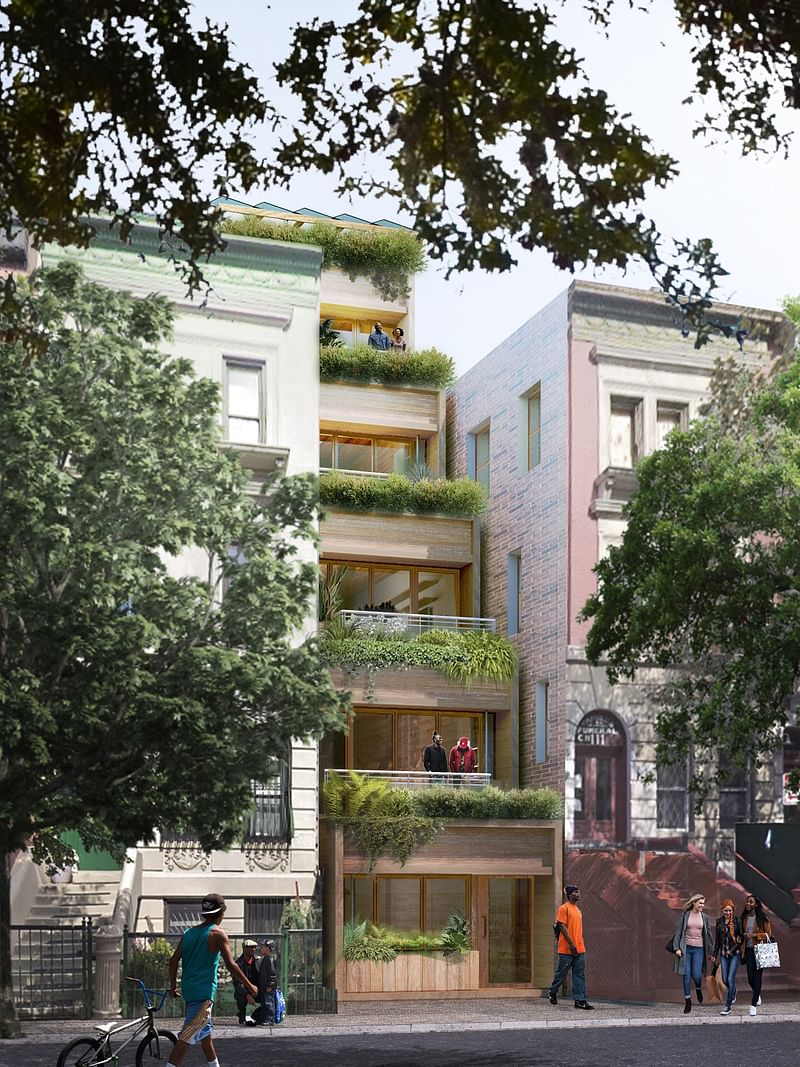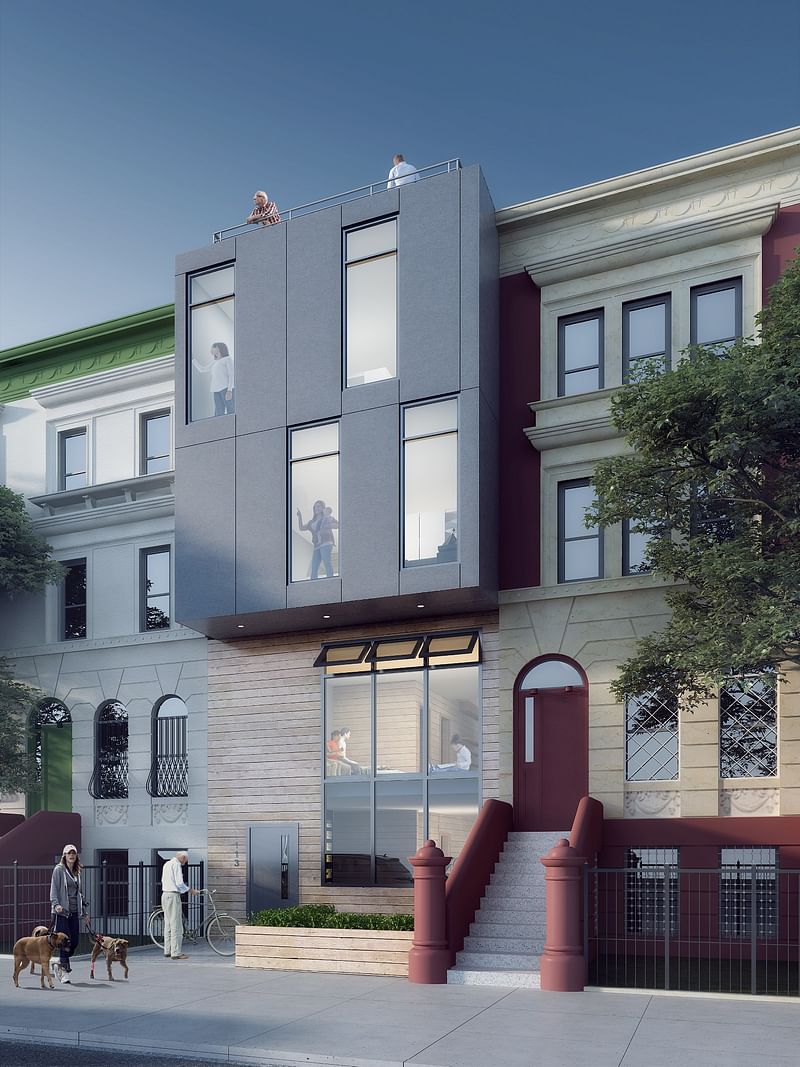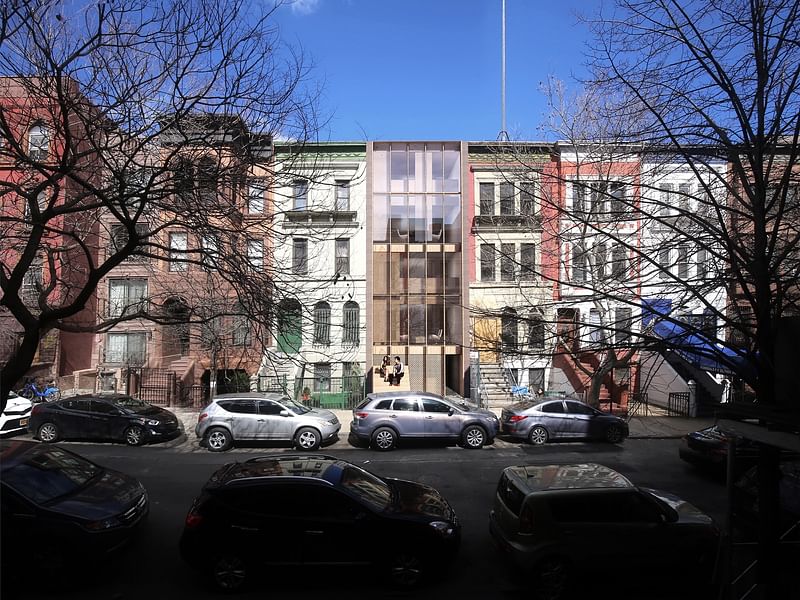
The five finalist entries for NYC's “Big Ideas for Small Lots” affordable housing competition
By Justine Testado|
Tuesday, May 21, 2019
Related
As part of the City of New York's efforts to provide more affordable housing to its residents, the Big Ideas for Small Lots NYC competition was launched by the NYC Department of Housing and Preservation (HPD) and the AIANY to solicit innovative architectural proposals for small-scale, urban infill affordable housing in designated sites across the city.
Out of more than 400 submissions in Stage I, the esteemed jury recently selected five competitive, experienced teams to advance as finalists to Stage II. In the second stage, the finalists will have three months to assemble a team that is capable of performing developer and contractor duties and to further evolve their initial designs into an affordable housing scheme. One or more City-owned sites will be assigned to each finalist according to their interest, capacity, and appropriateness of their initial submission. At the end of the competition this November, HPD may select one or more teams to develop their proposals into an affordable housing project.
Check out the five finalist proposals right below.
“Greenfill Housing as Garden” by Michael Sorkin Studio

Global design practice Michael Sorkin Studio, whose work explores the city and green architecture, submitted the proposal “Greenfill Housing as Garden”.
“Our design pushes the limits of environmental friendliness, explores new and economical construction methods and materials, provides ‘non-traditional’ accommodation for today’s market, engages local community resources in building and training, and seeks to be the best possible neighbor in differing social and physical circumstances. We investigate ‘net-zero’ architecture and its infrastructures as well as accommodation for a diversity of life-styles. Individual units are small lofts, augmented by shared spaces, including a ground floor co-working, studio, or meeting room, a congenial roof-top, and a small ‘hotel’ room for guests. We’ve been especially engaged with offering a new prototype for daylighting in this typical party-wall situation.”
“Mass Green Living” by Anawan/101 + Kane AUD

First meeting as architecture students at the University of Kentucky over 20 years ago, Jeremiah Joseph of Anawan/101 and Ted Kane of Kane AUD collaborated once again for this competition. Their jointly designed proposal, “Mass Green Living”, explores how affordable housing can promote healthy, sustainable living and bring about a stronger sense of community.
“These ideas coalesce in our Urban Garage, a public extension of each apartment everyone shares for simple tasks and social activities. Each individual unit uses open, through-floor designs to provide cross ventilation and maximum natural lighting. Additionally, front and rear exterior gardens in the apartments supply planting space and solar shading. For the structure of the building cross laminated timber is employed for its precise nature, sustainable construction, and warm finished appearance. When combined together we believe this toolkit of solutions can be readily used to provide healthy, affordable living throughout New York City,” the team says.
“More With Less” by Palette Architecture

NYC-based Palette Architecture, whose current work has been focusing on new multi-family buildings and boutique hotels, proposes “More With Less”. The scheme “seeks to economically house residents in community-driven, contextually-appropriate developments. By leveraging pre-fabrication practices and opportunities inherent on small sites, we can offer affordable construction that maximizes the number of residents served and minimizes costs. The proposal operates within the current code and zoning standards to create micro-communities where residents benefit from shared resources and increased agency. Because of its scale, each community’s collective identity is wholly defined by its members, who have an individual stake in forming the physical environment. Common kitchens, unprogrammed flex spaces, exterior spaces, and semi-private interior terraces provide residents with scalable levels of privacy which become the armature for unique and organic community growth.”
“System for Narrow Living” by Only If

Working in a range of typologies and scales, Only If from NYC proposed a “System for Narrow Living”. “Buildings on small lots need to avoid taking on the obligations of larger projects,” they argue. “For 113 West 136th, our proposal strategically avoids the infrastructure of bigger buildings such as an elevator, resulting in an efficient and compact vertical core. This, in turn, provides more space to vary its 7 units, which range from a micro-studio with a front stoop, to studios and loft studios, to a one and two-bedroom unit. This mixture is envisioned to create a stronger community of diverse residents. Within each unit, a thickened wall of prefabricated components addresses the challenges of small units and accommodates services, storage, kitchens, and circulation within loft units.”
“Fold and Stack” by OBJ

A design collective engaging with art, architecture, and urbanism the OBJ team's “Fold and Stack” proposal poses the question: “What do you do when you have limited space? You fold and stack,” they describe. “Our proposal seeks to turn the subject-site’s small footprint from a design obstacle into a design catalyst. By introducing a double-height typical unit ‘Fold & Stack’ seeks to minimize the unit’s footprint, consolidate services into a modular wet core, and maximize reconfigurability across as many sites as possible. The double-height design brings more of the unit to the exterior of the site – allowing greater access to natural light and ventilation. A combination of prefabricated elements and cross-laminated timber panels allows for fast construction and minimal on-site labor.”
RELATED COMPETITION Big Ideas for Small Lots NYC

RELATED NEWS “Pocket Neighborhoods” and “Erie Armada” win New York's Reimagine the Canals competition

RELATED NEWS The winning ideas of the London Affordable Housing Challenge

RELATED NEWS “Home within House” wins Building Trust International's 2018 Affordable Housing Challenge in Phnom Penh


Share
0 Comments
Comment as :